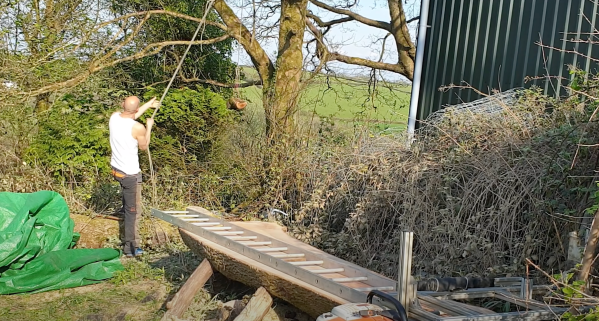Buying a desk is all well and good, but [WoodCraftly] found that the options they found online were too pricey for what was being offered. Buying the table frame from scratch was much cheaper, and just required crafting a top to match. That provided the opportunity to create this beautiful herringbone-finish desk created with some simple woodworking techniques.
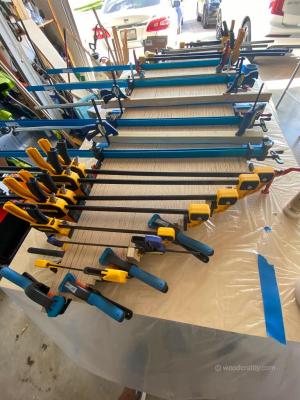
The build starts with a motorized corner desk frame that can be bought from amazon for just $550. To create the chevron-finish top, [WoodCraftly] grabbed some plywood sheets, and cut them into a series of 1-inch strips. These were then flipped 90-degrees onto their side, and glued together to create a panel that showed off the individual layers of the plywood. This panel was then cut into 3-inch wide strips at a 45-degree angle, and these strips were then placed back to back and once again glued up to create the attractive herringbone design.
From there, it was a simple matter of gluing up panels into the L-shape required for the desk, adding mounting holes, and rounding off the corners for a nice finish. The desk was also given a thick coat of epoxy on the bottom which soaked into the wood and helped give the desk some strength, and a top coat that was sanded back to a natural-look finish.
Overall, the final desk is just the product of some smart cutting and gluing steps combined to create a fun pattern in the end. It’s always fun to build your own furniture because you can express your own style in your creations. Video after the break.
Continue reading “Chevron Desk Takes Advantage Of Plywood For Patterning”



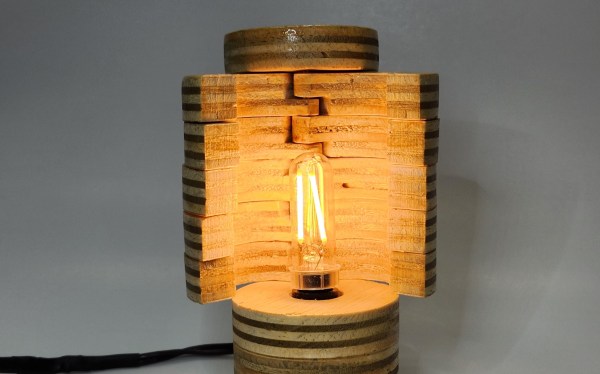

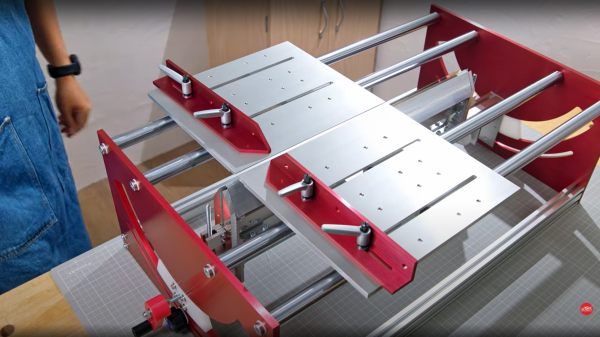
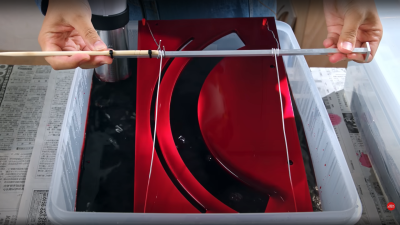 which might be a bit tricky to track down if you were so inclined to reproduce the build. It appears (well if you believe the auto-translation by Google Lens, anyway) to be a spare blade for a commercial guide saw available in Japan at least.
which might be a bit tricky to track down if you were so inclined to reproduce the build. It appears (well if you believe the auto-translation by Google Lens, anyway) to be a spare blade for a commercial guide saw available in Japan at least.
